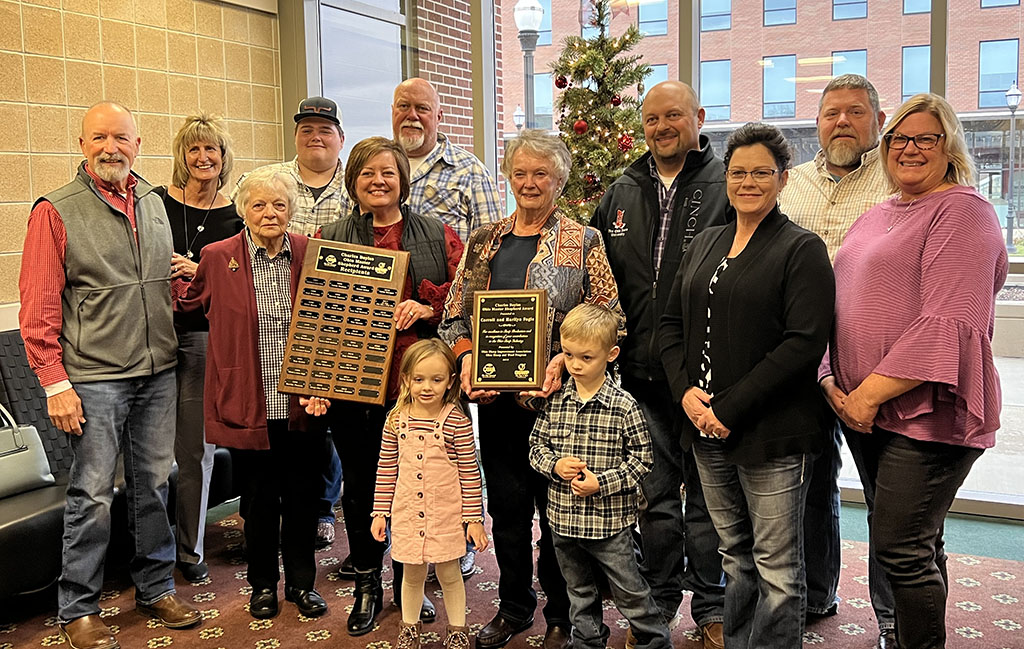
WOOSTER, Ohio — Faced with steep land prices and unpredictable weather trends, farmers looking to diversify their operations without expanding land use should consider raising sheep indoors, according to speakers at the annual Buckeye Shepherds’ Symposium.
The gathering, sponsored by the Ohio Sheep Improvement Association, took place Dec. 3, at the Ohio Agricultural Research and Development Center, in Wooster, Ohio, and attracted around 175 in attendance. Speakers discussed housing, health, genetics and nutrition required for successful indoor sheep production in the Midwest.
Going inside
Sheep raised in well ventilated facilities, with adequate space and good management systems, can be very well cared for, according to Eric Gordon, with Ohio State University College of Veterinary Medicine, and Richard Ehrhardt, with Michigan State University Department of Animal Sciences. It requires a smaller footprint and can be more efficient than other systems of raising sheep. “You can overcome the barrier of land availability,” Ehrhardt said.
Increasingly, farms have old dairy, veal, poultry or pig barns that are no longer in use. Indoor confinement systems to raise sheep are one way to make use of those facilities, Gordon said. There are questions that need to be addressed though, such as what the end goal is for marketing, whether there is adequate labor and how the space can be ventilated, cleaned and used.
Sheep farmers are turning to intensive year round systems to produce more lambs. In order to do that properly, Ehrhardt said, climate controlled facilities are ideal. Farmers should seek to balance adequate air flow during the warm seasons, with proper insulation during cold seasons to avoid chilled lambs, and provide more comfort for the humans involved. “We can certainly optimize reproduction,” Ehrhardt said.
Ehrhardt suggested considering an indoor system, paired with grazing services, as a way to use space well and ensure that even sheep on maintenance nutrition contribute by fulfilling grazing contracts.
Health
Indoor confinement systems do require attention to certain health issues though, Gordon said. Proper ventilation and clean facilities can help, but farmers should watch for respiratory illness, gastrointestinal problems, grain overload and foot and leg issues.
On the other hand though, farmers won’t have to worry about predators or worm loads, both of which are a big concern with small ruminants. Raising sheep indoors also allows for greater control over nutrition, especially for higher production flocks, Gordon said.
Genetics
Andrew Weaver, from North Carolina State University Department of Animal Sciences, discussed genetics and nutrition. It starts, he said, with figuring out what your involvement in the sheep industry will be. You can be anything from an elite seedstock producer to a commercial one.
Build genetics from there, he said. The key starting point is ram genetics. You need to find rams that will pull your flock genetics forward toward the improvements you want to make. Sometimes, that may not be the fanciest ram out there.
As you build your genetic base, know the traits you have and the traits you want to add in, Weaver said. Databases like the National Sheep Improvement Program help quantify various traits.
Ohio State researchers also gave updates on ongoing projects, including research into coyotes, hormone use to aid breeding and alternative vegetation management in utility scale solar projects.

Master Shepherd award
Carroll and Marilyn Fogle, of Union County, were honored with the 2022 Charles Boyles Master Shepherd Award. Carroll Fogle has passed away; Marilyn Fogle received the award.
The Fogles have been in the sheep business for decades, starting out with club lambs and later moving into purebred Border Leicester sheep. They earned awards from North American International Livestock Exposition and the Ohio State Fair over the years.
In a video tribute to the couple, son Gregg Fogle recalled early on, how they purchased a group of sheep, sheared them immediately and within the week they started lambing. His dad thought there was nothing to it. “It all went downhill from there,” Gregg Fogle said, to laughter from those watching the tribute.
Other awards
Distinguished Service awards went to: Scott Peters, of Darke County; Dale Duerr, of Tuscarawas County; Ross Larue, of Pickaway County; and Kathy Bielek, of Wayne County. John Anderson, of Wayne County, received the President’s award.
Misty Oaks Farm, owned by Kathy and Jeff Bielek, received the Environmental Stewardship award. Friend of the Industry award went to Rachel Budd, of Wayne County.
Emma Peters, of Darke County, was recognized as 2022-22 Ohio Lamb and Wool Ambassador.
Clay Johnson, of Wayne County, was the recipient of the Dr. Jack Judy Memorial Scholarship.
Shala Graham, of Licking County, and Linsey Eddy, of Union County, were awarded the Ralph H. Grimshaw Memorial Scholarship.
Pierce Schadle, of Brown County, was awarded the High Family Memorial Scholarship.
Morgan Johnson, of Wayne County, received the OSIA LEAD Council Scholarship.
The 2022 State FFA Sheep Proficiency Award winner was Emily Stevens, of Huron County.
















